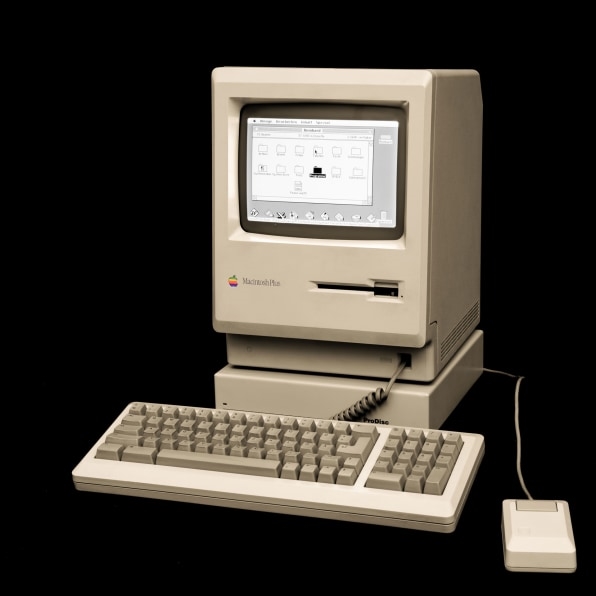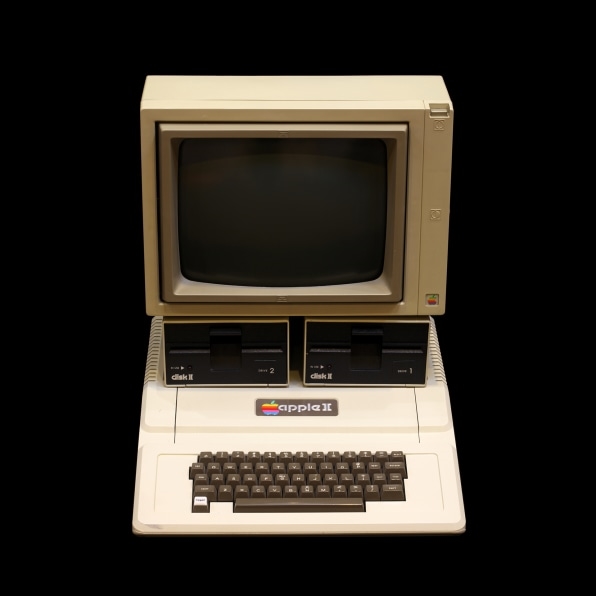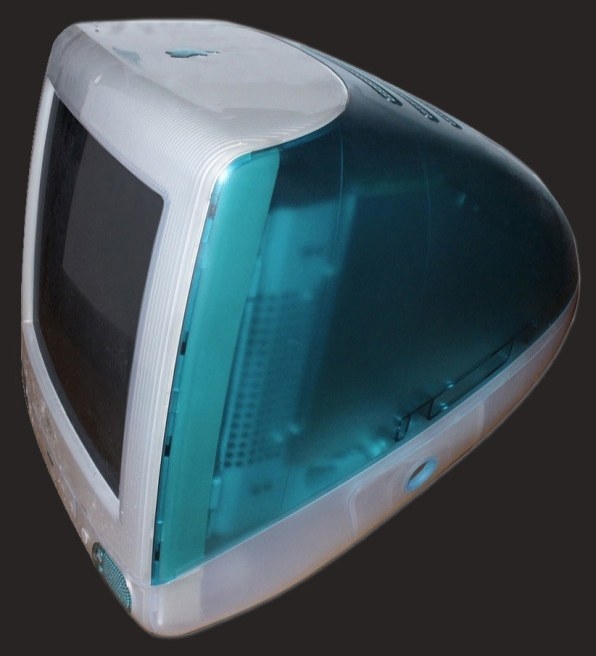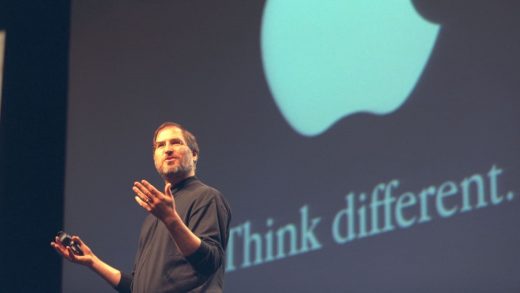Why the Macintosh idea has survived and thrived since 1984
Significant innovations often require “epistemological ruptures,” a notion introduced in 1938 by the French philosopher Gaston Bachelard that was recast as “paradigm shifts” by Thomas Kuhn in his 1962 book, The Structure of Scientific Revolutions. As relevant as the expression may be to describe the unexpected advent of an invention or innovation, it does it from the point of view of the inventor/innovator or as an after-the-fact observation. In reality, there is rarely an immediate or even clear line of demarcation between a “before” and an “after,” or any form of substitution phenomenon. This doesn’t necessarily happen overnight, even for scientific discoveries, let alone for economic or societal innovation.
Cars didn’t kill horses. It’s one thing to shift paradigms; it’s another to understand how they crawl into the mores. The adoption of an innovation is often more akin to what I’m calling a paradigm drift, an expression that I’m basing on what the anthropologist and linguist Edward Sapir called “language drift.”
Language drift reflects the gradual and often unconscious changes in natural languages. This drift translates into new words, new grammatical forms, new patterns of expression, and sometimes new behaviors. And this does take time! Similarly, the Macintosh Graphical User Interface was a new idiom. It was the first mass-market implementation of a new system of signs and symbols advocated by Douglas Engelbart; it was a new language that both rationally and by osmosis people started to speak. Once you had touched a Macintosh, you felt in control, and the “interface” of any other device, such as your VCRs or your LaserDisc players, came across as an impossible conversation.
By 1997, when Steve Jobs came back to Apple, 20 to 25 million Macintosh users had become a movement of people speaking the same language, and this because of various reasons:
Apple delivered on the early promises of the Macintosh
Except for those who want to remain resolutely blind to the lessons of history, or for impatient idealists, innovations rarely come as fully formed bodies ready to wage and win wars. Many innovations die because they come from organizations with insufficient resources, and which, as a result, don’t have the means to improve the initial version and deliver on the promise.
After Steve Jobs’s departure, Apple as a company was rarely popular among developers and users. Suffice it to say that the management of the organization was iffy. It was hard to know what the vision of the company was, but in the end, and maybe because of its limited inventiveness, the company ensured the survival of the Macintosh. It was its only cash cow; so, little by little (and albeit sometimes randomly), Apple delivered on the original promise while adding features, mostly under competitive pressure.

[Photo: Felix Winkelnkemper/Wikimedia Commons]
The Macintosh Plus, released in early 1986, was a welcome evolution; in 1987, Apple delivered the Macintosh SE and the Macintosh II. Through its multiple iterations and shapes—to the point of creating confusion for both developers and users—the Macintosh did reasonably well until 1995. Of course, it was unable to compete with sales of PCs, which had become much easier to use with the release of Windows 3.1 in 1992, but, nonetheless, the Macintosh rose from 1.3 million units in 1990 to an all-time high of 4.5 million units in 1995. By 1996, however, prospects were starting to look grim, with severe revenue losses and grave management issues. The Macintosh seemed like it might be doomed, with the company in a downward spiral.
Apple got a new lease on life with the purchase, early in 1997, of Steve Jobs’s failed company, NeXT. Despite the business’s failure, the NeXTStep/OpenStep operating system was amazing, and it would become the foundation of the new generation of Mac OSs. Little by little, Steve Jobs regained full control of the company. Of course, he slammed everything that had been done while he was away, but luckily for him and for Macintosh users, he had the Macintosh to restart. He cleaned up the product line, and the iMac, released in August 1998, blew people away, with its gumdrop looks and its translucent plastic case. It was like a Mac appearing in new clothes.
The fans’ unrelenting evangelism
The initial Macintosh users were far more than experimental customers who were meant to validate/invalidate an early product. Thanks to the Macintosh evangelists (Mike Boich, Alain Rossmann, and, of course, Guy Kawasaki), they were people who believed in the Macintosh as fervently as Steve Jobs. The Macintosh base consisted of fans and evangelists rather than customers: They surfed and effected the paradigm drift.
The Macintosh language granted a sense of social status, enabling people to develop a positive image of themselves. Even when they had boring jobs, people didn’t see themselves as paper pushers. Using a Macintosh made them feel more important and more creative—and for good reasons: Mac-compatible software created slicker, neater work in comparison to the PC alternative (my first company’s product, 4th Dimension, was a database for Macintosh).
The Mac emboldened a new breed of nonconformists (a composite community of intellectuals, artists, designers, independent developers, mavericks in corporations, etc.) and spurred the creation of powerful Macintosh user groups, such as the BMUG (Berkeley Macintosh User Group), which had a sort of double mission. On the one hand, it was a resurgence of the 60’s counterculture with “roots in The Hacker Ethic and Berkeley Radicalism,” as Stephen Howard and Raines Cohen put it. On the other, it was a pedagogical platform, as Reese Jones explained: “I see two different sets of people in our group: those with computer experience who are just now seeing new avenues to follow in computing, and those with little or no experience who are just now seeing what computing can do. We must provide for the different needs of both, but we have in common that our eyes are just being opened to something new and different.”
User groups were not an Apple lobby; they were a powerful pressure group kicking Apple’s ass, forcing it to deliver on its promise.
The Macintosh foothold in education
As Andy Hertzfeld wrote, almost from its inception, the Apple II became very successful in the K-12 education market. As far as the Macintosh was concerned, it took the strong will of Joanna Hoffman to convince Jobs that it made sense to also put together a plan to sell Macs to higher education. Her tenacity led to the creation of the Macintosh consortium, which provided discounted Macs for students and faculty and was run by Dan’l Lewin.

[Photo: Rama & Musée Bolo/Wikimedia Commons]
In an environment where success was a sprint often followed by a fall, an educational program betting on the potential of the knowledge workers of the future was placing the Macintosh for an endurance race. Would these students bear with clunky PCs later down the road? Maybe, if they had no choice, but they could at least know that something better existed. In all cases, training new people is better than trying to persuade those who have a vested interest in the status quo. As Max Planck put it in his “Scientific Autobiography,” “an important scientific innovation rarely makes its way by gradually winning over and converting its opponents: it rarely happens that Saul becomes Paul. What does happen is that its opponents gradually die out, and that the growing generation is familiarized with the ideas from the beginning: another instance of the fact that the future lies with the youth.”
In his first big public comeback keynote, at the August 1997 Macworld Expo, Steve Jobs emphasized that “Apple [was] the single largest education supplier in the world: 60% [of the] computers in all of education are Apples. What an incredible foundation to build on!”
The success of Windows established the Macintosh as a standard
I know that it’s somewhat of a paradox, but the success of Windows validated the Macintosh as the interface standard that everybody wanted to emulate. The Macintosh interface was here to stay, because it was a new way to create a dialogue between users and electronic devices. The fact that it took 10 years for Microsoft to come up with Windows 95—that didn’t fully conceal some of the quirks on MS-DOS— also demonstrated that “interface” was not a cosmetic trick and, instead required a lot of engineering.
The success of Windows annoyed millions of Macintosh users, but many also felt good for choosing the Macintosh early on. They had selected the Mac in the 80s, feeling like bright and sharp mavericks, but at the end of the 90s’, they were even prouder to come across as savvy pioneers and trailblazers. Macintosh users were ultimately the ones who substantiated the Macintosh as the language that would shape forever the relationship between human beings and digital devices.
“Think different” (it’s the same)
The survival of the Mac between 1985 and 1997 undermines many of the clichés about innovation or even the idea that innovation is about “timing.” The 1984 kairos was not the same as the 1997 kairos, but this doesn’t mean that we are dealing with entirely incongruous eras. They share at least some human texture: Even if people’s values and attitudes evolve over the years, memorable experiences tend to stick.
Powerful innovations have migratory capabilities, especially when they summon emotions. Larry Ellison, as a newly appointed board member in 1997, put it eloquently: “I have been using a Mac since 1984. . . . Apple is the only lifestyle brand in the computer industry, the only company that people feel passionate about. You know, my company Oracle, it’s a huge company. IBM is a huge company, Microsoft is a huge company, but no one has incredible emotions associated with our companies. Only Apple is really a lifestyle brand.”
The 1997 Mac was not the same as the 1984 128K . . . except that it was still a Macintosh. As Jobs insisted in his 1997 keynote, Apple’s key assets, in addition to its 20 or 25 million users, were 1) the brand itself and 2) the Mac OS. Jobs paradoxically emphasized continuity at the very same time he was launching the celebrated and often commented-upon “Think Different” campaign.
As a text on posters, “Think Different” was an exhortation to new users to get off the beaten path. For most people, it’s cool to feel and think “different.” The ad was also a tribute to the existing base in a typical ’80s counterculture style, addressing “the crazy ones, the misfits, the rebels, the troublemakers, the round pegs in the square holes, the ones who see things differently,” etc. But the ad was not moving into the confrontational play of the “1984” commercial. Just the opposite: The iconoclastic side of the message is softened by the image of 17 inspirational role models of the 20th century (Albert Einstein, Bob Dylan, Martin Luther King, Jr., John Lennon, Muhammad Ali, Mahatma Gandhi, Jim Henson, Maria Callas, Pablo Picasso, etc.). This campaign had a cross-generational appeal, like the Macintosh itself.
No kairos disappears just because “time flies.” In fact, time doesn’t fly. The contexts in which we live self-rearrange, often imperceptibly blending into each other, pushing some realities into the background and eventually into oblivion while pushing others in the limelight. Many things had changed by 1997. Jobs and Gates had settled the pending lawsuits between their companies, and, among other things, Microsoft had purchased $150 million of nonvoting Apple stock. Now, the Macintosh was cast under the internet era and de facto positioned as a favorite: Already, 64% of websites were created on Macintosh. Empowerment was about providing a meaningful internet experience, not just surfing the Web. As Larry Ellison put it as early as 1998, “At Apple we’re going to build Internet information appliances with a Macintosh foundation.”

The 1998 iMac was a big event. As noted by Fortune in November 1998, it was “the clearest indication of how Jobs plans to attack the consumer market.” Steve Jobs had reached a “mythical stature,” and there were grounds for hope: “As long as Jobs remains,” Fortune concluded, “that kind of faith will stay alive. . . . The people who finally make companies win—people with money—seek more than the pleasure of witnessing underdogs make beautiful things that teach the big lugs of the industry a thing or two. For once, they’d like to see consistency from this company, which has, for more than 20 years, shown the capacity for both magic and self-destruction.”
The magic won. The rest is history. The Mac OS became the foundation for a transformation not so much of the desktop computer industry as anticipated in the 80s, but of the music business, the mobile phone industry, tablet computers, the app market, the gadget scene, and even the brick-and-mortar world. In 2020, the Mac is playing a supporting role in terms of sales in the Apple ecosystem, but the concept of the Mac OS remains the bedrock of other devices that each had/have their own S growth curve, and which, when combined, produce the Apple exponential growth curve.
The history of the Macintosh is the history of an innovation that has set long-lasting standards in human-to-machine interactions. From an Apple perspective, it is the springboard for multiple different innovations tied together seamlessly to generate a unique holistic consumer experience. In the end, it’s somewhat ironic that in 2020 the two largest players in the technology industry are still . . . Microsoft and Apple.
Marylene Delbourg-Delphis was one of the first European women to found (with Guy Kawasaki) a technology company in Silicon Valley. She has been the CEO of four companies and an adviser or board member for over 30 more. She recently published Everybody Wants to Love Their Job—Rebuilding Trust and Culture.
(53)



